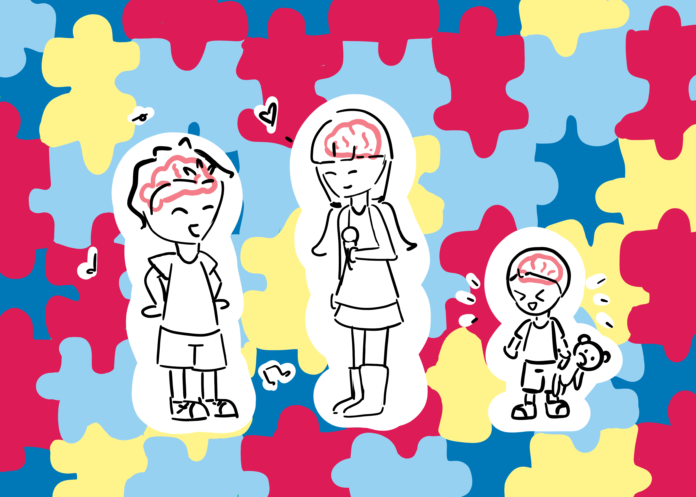UC Davis study finds that individuals with ASD have different genes relating to inflammation and immunity
By KATIE HELLMAN — science@theaggie.org
According to a recent study by UC Davis MIND Institute, the brains of people with autism spectrum disorder (ASD) develop differently than those with typical neurodevelopment. This can be attributed to genes corresponding to inflammation, immunity response and neural transmissions. The observed changes occur as a child develops into an adult.
ASD is usually identifiable beginning in early childhood and can present with challenges communicating and interacting with others. It affects about one in 54 children in the U.S.
Cynthia Schumann, co-senior author of the study and professor of neuroscience in the Department of Psychiatry and Behavioral Sciences at UC Davis, commented on the hypothesis for this study.
“Early brain overgrowth, neuronal excess, local hyper-connectivity and atypical signaling early in childhood puts stress on the system, triggering a cycle of neuroinflammatory responses and cell damage across the lifespan — potentially resulting in neuropathogenic and neurodegenerative processes later in adulthood,” Schumann said.
The main goal of the study was to find a correlation between how brain neurons communicate with each other and the relationship between age and ASD. To conduct the study, researchers investigated genetic differences in the neurons of people with ASD at different ages and compared them to those without ASD.
Brain tissues from the superior temporal gyrus (STG), which controls sound, language processing and social perception, were taken from 59 deceased individuals. Of these people, 27 had ASD during their lifetime, and 32 did not. The individuals were between the ages of two and 73 at the time of their passing.
In the STG tissue and isolated brain neurons, messenger RNA (mRNA) expression was analyzed on a molecular level. The mRNA carries genetic information needed to make proteins.
The study found differences in genes in the brains of people with ASD — some of which produced more mRNA (an indication that certain genes are upregulated or more active than normal) and some that produced less mRNA. The downregulated genes were associated with brain connectivity, and these findings suggested that excessive neuronal activity may speed the aging process of the brain.
“We found 194 differentially expressed genes between individuals with ASD and controls,” the study read. “Of these, 143 were upregulated and 51 were downregulated.”
The study also found 14 genes in bulk STG tissue and three genes in isolated neurons that differed with age between those with ASD and those without ASD. Additionally, the brains were also found to have more mRNA for heat-shock proteins, which activate immune response and inflammation.
“We found that genes related to both neuronal signaling and neuroinflammation are dysregulated in people with autism,” Schumann said. “Expression of neurotransmitters, like GAD, which is the primary inhibitory gene that dampens neural communication, decreases with age in ASD. That means neurons may have too much excitatory signal that can wear down the system and over activate the immune system, leading to neuroinflammation that can damage neurons later in life.”
Written by: Katie Hellman — science@theaggie.org




